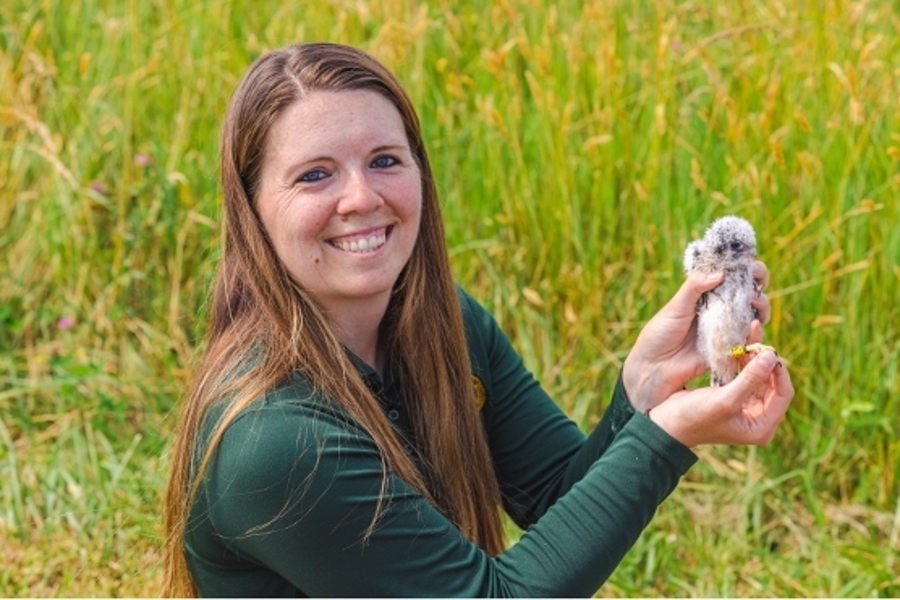STATE OF DELAWARE RECEIVES GRANT FOR $120K FOR AMERICAN KESTREL CONSERVATION

State of Delaware - The State of Delaware has been granted an estimated sum of $120,000 from the Wildlife Restoration Program of the U.S. Fish & Wildlife Service. This vital funding will be channeled into the research and preservation efforts for the American kestrel, a North American species currently listed as endangered in Delaware and holds the title of the continent's smallest falcon.
This diminutive yet vibrant falcon, comparable in size to the mourning dove, has witnessed population reduction of over 93% in the Mid-Atlantic region. The falcon, a potent airborne predator, boasts a unique ability to head into strong winds, hover in position, and plunge downwards to seize its prey mid-flight. Scientists propose that the catalysts for their decline could range from habitat loss and pesticide buildup to new diseases and climate changes.
The Delaware Department of Natural Resources and Environmental Control will utilize this funding to drive essential conservation activities. Actions planned for this year include outfitting American kestrels with radio transmitters and the erection of ten additional avian-monitoring radio towers. This enhancement in infrastructure will integrate into an international network, bolstering avian research in the state by identifying passing kestrels and other bird species.
Regarding this enhancement, biologist Jordan Brown from DNREC Division of Fish and Wildlife stated, "This is a promising step forward in our kestrel research." He emphasized that they have secured both the authorization and funding to equip kestrels with nanotag radio transmitters in 2024, and to build ten more towers as part of the Motus Wildlife Tracking System for detecting Delaware-tagged birds and animals from other places.
The American kestrel was recognized as an endangered species in Delaware since 2013. To better comprehend the reasons behind their decline, as well as their distribution and population patterns, the Brandywine Zoo of DNREC initiated the installation of kestrel nesting boxes on state-wide private and public properties in 2014. The Division of Fish and Wildlife joined this cause in 2016, leading to the formation of the Delaware Kestrel Partnership, which now oversees 79 nesting boxes. This setup assists biologists in studying the various stages of their reproductive cycle and facilitates tagging of parent kestrels and their offspring.
Currently, the State of Delaware operates nine Motus radio towers to collect data from passing tagged birds, including American Kestrels. Ten additional towers are planned, with the first slated for installation at the Abbott's Mill Nature Center of the Delaware Nature Society near Milford, on February 5. The Delaware Kestrel Partnership has been joined by the Delaware Nature Society since 2017, which currently provides habitat for nine kestrel boxes. These boxes contributed to the successful hatching of 55 kestrel chicks over the past seven years. They will also be donating radio tags to the Partnership to further support this research.
Plans are underway to erect two more towers on state wildlife areas before the Spring, while the rest will be installed subsequently to cover gaps in the existing statewide tower network.
The Motus Wildlife Tracking System, an international grid, uses automated radio telemetry to simultaneously track multiple aerial species. This global community of researchers, educators, organizations, and citizens can carry out meaningful research and education about migratory animal ecology and conservation over large distances. The Motus towers in Delaware also contribute valuable data about birds, bats, and insects on a global scale to researchers worldwide.
Cover photo courtesy of DNREC Division of Fish and Wildlife


